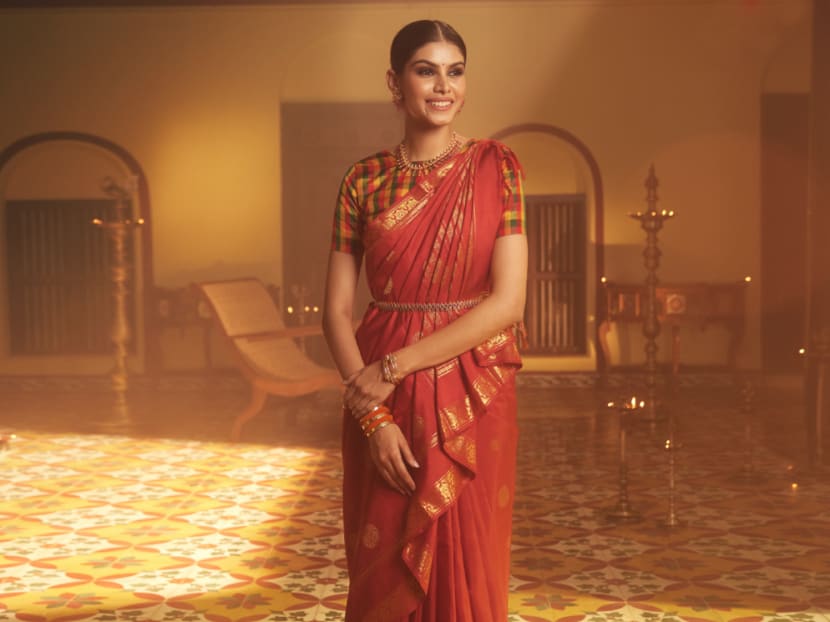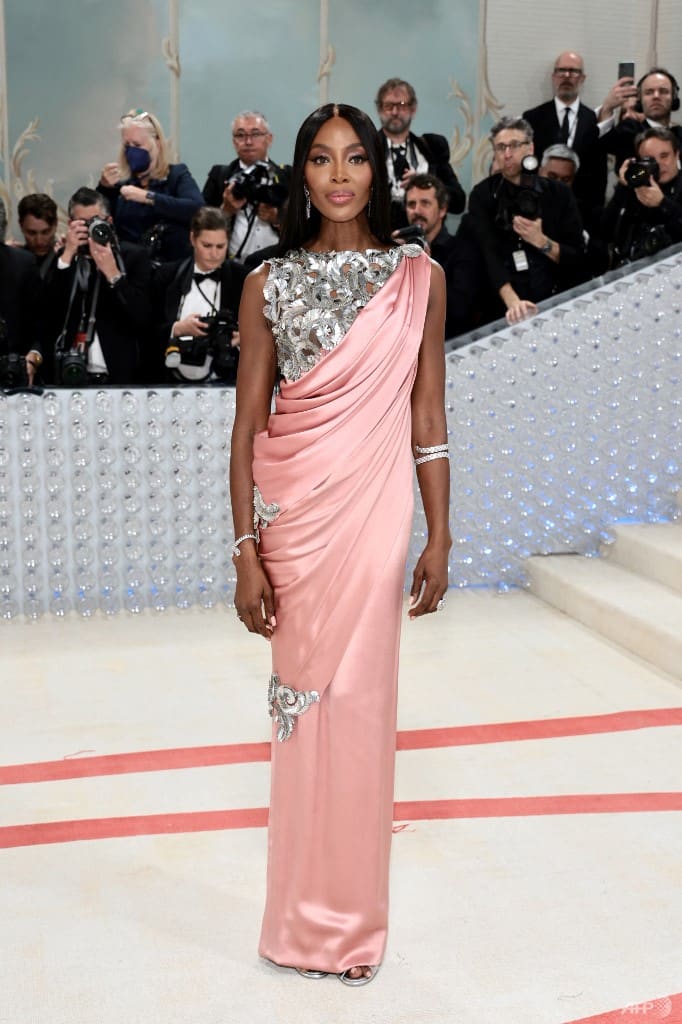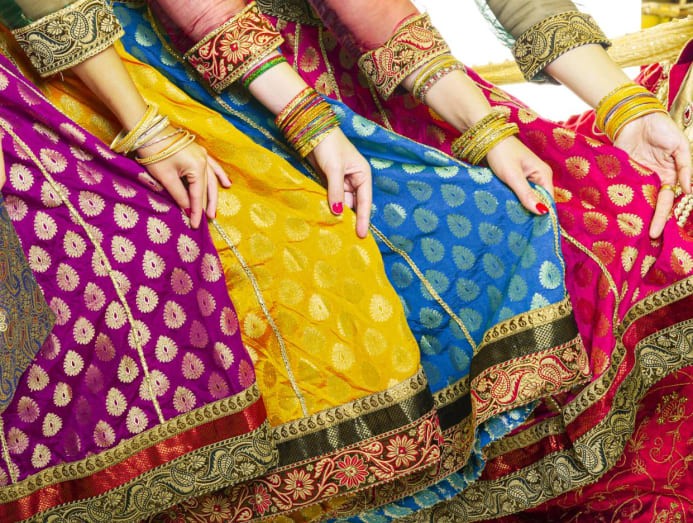Do you know the symbolic meaning behind the Indian sari? Plus the best places to shop
Intricate, elegant and steeped in history, the sari holds great significance for the Indian culture and those who wear it.

The sari holds layers of symbolism in the Indian culture. (Photo: Instagram/nallisilksarees)

This audio is generated by an AI tool.
Despite my Indian-Chinese heritage, I am ashamed to say that I have only ever worn a sari once and that was for a school play on multiculturalism (being in a Chinese school, I was a natural choice for the role). As an angsty teen with an identity crisis then, I was both unsure yet intrigued by the idea of donning a traditional garment, especially one I perceived to be too ethnic and elaborate for my pop star-influenced tastes at the time.
I remember asking my sari-wearing grandmother to teach me the proper way to drape the traditional fabric so I didn’t make a fool of myself. This required much patience on her end and I was in awe at how deftly she did it, all without the use of safety pins or any form of fastening to hold the swathe of fabric in place.
I did manage to keep the sari up for the performance but I don’t think I did it justice with the careless way I draped it around me. What’s even more appalling is that I haven’t worn a sari since, although I bought one on holiday in India with every intention of doing so. Truth is, I am in awe of its beauty but also intimidated by the sheer richness and significance of it.
POP CULTURE SIGHTINGS
Worn in India, Pakistan, Bangladesh, Sri Lanka and Nepal, the sari (also known as saree) has also been embraced by the Western world with celebrities wearing glamorous versions of the traditional garment.
In 1998, Madonna wore an elegant deep purple sari at the VH1 Fashion Awards. Lady Gaga looked ethereal in a white sari adorned with Swarovski crystals by Indian designer Tarun Tahiliani at the Formula 1 concert in India in 2011. At this year’s Met Gala, Naomi Campbell turned heads in an archival Chanel sari from 2010 while Zendaya slayed at the opening of the Nita Mukesh Ambami Cultural Centre in Mumbai earlier this year in a modern number by Indian designer, Rahul Mishra.

Like the clever way it is designed from draping a lengthy piece of intricate fabric around the body, the sari holds layers of symbolism in the Indian culture. For me, it’s a reminder of how significant this garment is to the history and cultural fabric of India – an important part of my heritage that I have, perhaps, stashed away too deeply in my wardrobe.
THE BEGINNINGS OF A CULTURAL ICON
Dating back to between 2800 and 1800 BCE when the Indus valley civilisation thrived in northwest India, the sari was originally part of a three-piece outfit which consisted of a piece of cloth draped as a lower garment, a chest band and another piece of cloth worn over the shoulder and used to cover the head.
The word “sari” means “strip of cloth” in Sanskrit and the garment was first made of cotton and later, silk, ikat, embroidery and tie-dye textiles grew popular. Over time, the fabric was also embellished with expensive stones, gold threads for the upper echelons of society.
With industralisation in India in the mid-nineteenth century, dyeing and printing techniques were introduced and the variety of saris grew. Today, the sari is a single strip of unstitched drape that can vary in length – from 4.5 metres to 9 metres long and 600 centimetres to 1.2 metres in width – and it can be made of a variety of fabrics, from natural materials such as cotton and silk to synthetic fabrics such as polyester and nylon.
While cotton saris are usually worn for everyday use and comfort, silk saris that are bright in colour are favoured at joyous occasions such as weddings. The variety of colours and patterns of saris available today is extensive with certain styles reflecting the tradition and culture of different regions of India.

There are symbolic meanings behind the colours of saris – for example, red is celebratory and symbolises fertility and prosperity; white is purity, spirituality and also the colour of mourning; while yellow means positivity, light and warmth. What is especially remarkable about the sari is that it is worn by all strata of society, both in rural communities and urban societies and its versatility makes it ideal for all shapes and sizes.
If you’re thinking of mastering the art of draping it, just be aware that there are more than a hundred ways to wear one, with some of the styles being region-specific. The most common is the Nivi style where the sari is wrapped around the waist with the loose end of the fabric to be worn over the left shoulder, partly baring the midriff. It is usually worn with a fitted bodice and a petticoat.
With Deepavali drawing near, it’s perhaps time to welcome the festival of lights in true ethnic style, with a sari or two from the following stores:
Dakshaini Silks
Since the 1990s, this local brand has been offering ethnic fashion wear in the finest silks sourced from all over India. There are bright and colourful designer saris, that are designed in-house. The team also provides hand embroidery and tailoring services, so you can easily get your garment altered too, if needed.
Available at Dakshaini Silks.
Fabindia
You’ll be able to find your sari of choice from this retailer which features traditional crafts sourced from villages across India. The company works closely with the artisans and endeavours to create sustainable livelihoods in the rural sector.
Available at Fabindia
Jaypore
You can find a wide selection of saris here, from timeless woven ones to printed contemporary pieces and intricate embroidered pieces as well as choices for special occasions. With menswear and kidswear available too, this is a one-stop shop for the whole family.
Available at Jaypore
Jinders
With over 25 years of experience, this store has an array of sari choices, with bridal collections for weddings and engagements too. You can also head over to their online store Studio J which specialises in occasion and festive wear.
Available at Jinders
Nalli
Nalli has been offering Indian ethnic wear since 1990 and has become well-known for its collection of silk saris for every occasion with a variety of prints, embroideries and weaves. You can pick from traditional, modern or designer selections.
Available at Nalli
Pottu Kara Maami
With its beginnings as a humble home-based boutique, this store has since set up a shop at Little India which offers saris ranging from modern silhouettes to sequins, embroidery and traditional prints.
Available at Pottu Kara Maami
Style Express
You’re spoilt for choice with this boutique’s wide selection of silk and cotton saris in brightly coloured hues and different styles. There are also accessories to complete your look.
Available at Style Express
Stylemart
This popular local ethnic fashion retailer started in the 1950s as a tailoring shop in Changi Village and soon became a prominent name. You can find unique and glamorous georgette and net saris here.
Available at Stylemart
Yajnaseni
Named after a character from the famous Indian epic Mahabarata, Yajnaseni is a clothes store in Singapore that features simple yet statement pieces. You’ll find cotton, silk, linen and mandala-designed saris for any occasion.
Available at Yajnaseni (by appointment only)








